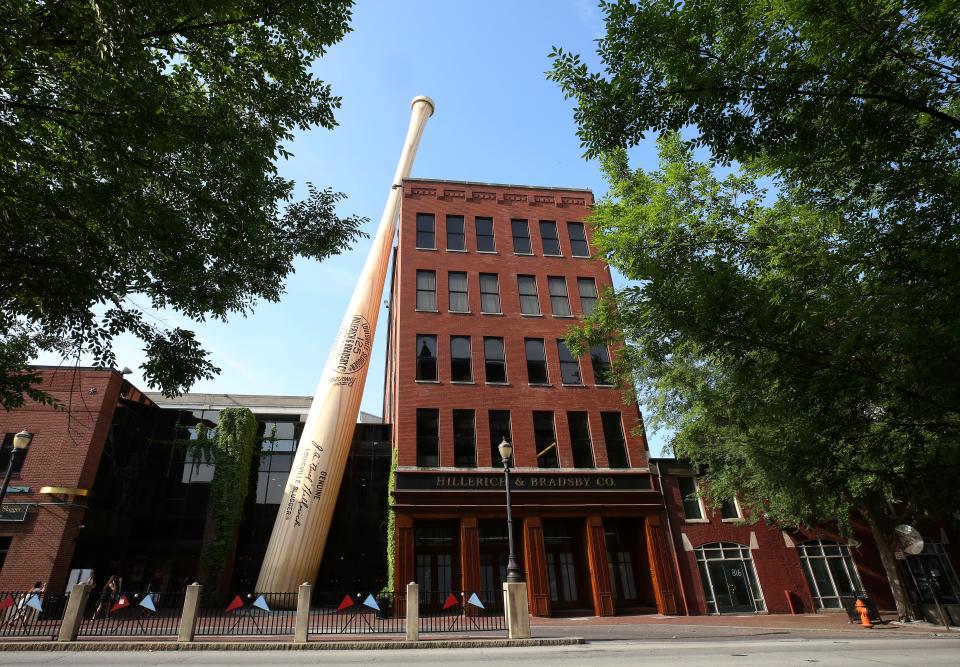Just Askin' | Is the Louisville Slugger Museum's Big Bat made out of real wood? What to know
The world's largest baseball bat could only be wielded by a folkloric giant, but since there are none around who could swing it, the bat serves as a can't-miss landmark leaning against the Louisville Slugger Museum and Factory.
The Big Bat, as museum officials have called it, has greeted Louisville residents and tourists since the museum opened in 1996. It is not the only unique piece on the museum property (check out the glove and baseball sculpted out of Kentucky limestone while you're there), but since it's the most visible, here are a few facts about the Big Bat.
How tall is the Louisville Slugger bat? Is the Big Bat made out of wood?
The bat stands 120 feet and weights 68,000 pounds, The Courier Journal previously reported. It is technically a giant version of a 34-inch bat baseball legend Babe Ruth would have used to slug a towering home run.
Though modern baseball bats originate from maple, ash and birch wood, the Big Bat is made of steel, according to the museum's website.

Was the Big Bat made in Louisville?
Louisville-based company Caldwell Tanks, which primarily constructs large industrial tanks at its Okolona facility, built The Big Bat. In addition to being a tourist attraction, the bat serves as a plumbing vent for the Slugger Museum's basement bathrooms, according to an article on Caldwell Tanks' website.
What was the relationship between Louisville Slugger and Babe Ruth, the inspiration for the the Big Bat?
Ruth, a Hall of Famer who often used a Louisville Slugger bat during his prolific major league career, would send Hillerich & Bradsby Co. — the company who owned the Louisville Slugger trademark — personal orders for "his model," the design the Big Bat is based from, The Courier Journal previously reported.
Ruth was known to make a notch on his bats somewhere around the Louisville Slugger logo every time he set a new home run record, a 1996 Courier Journal article stated. After a handle broke on a bat with 21 notches, Ruth gave the bat to Henry Morrow, then the manager of the Hillerich & Bradsby bat factory in Louisville. The bat would later be displayed at the Slugger Museum.
Features columnist Maggie Menderski contributed. Reach reporter Leo Bertucci at [email protected] or @leober2chee on X, formerly known as Twitter
More: Just Askin' | Will there be road work around Louisville's new VA hospital?
This article originally appeared on Louisville Courier Journal: Just Askin': Louisville Slugger Museum's Big Bat facts you didn't know